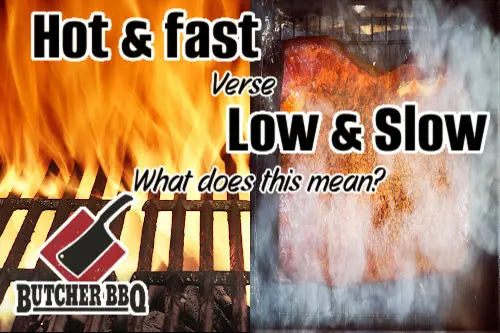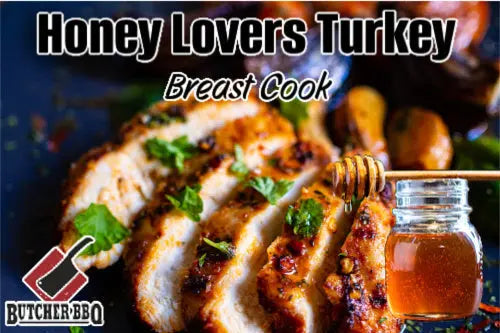
Mastering the Art of BBQ: Low and Slow vs. Hot and Fast
As a passionate backyard griller and barbecue enthusiast, I've always been fascinated by the art of low and slow cooking versus the high-heat, fast-paced approach. Both methods have their unique merits, and the choice between them can significantly impact the final flavor and texture of your smoked meats. In this blog post, we'll dive deep into the world of low and slow versus hot and fast BBQ, exploring the nuances of each technique and helping you decide which one is best suited for your next backyard cookout.
The Low and Slow Method
The low and slow method is the traditional approach to BBQ, favored by pitmasters and seasoned grillers alike. The basic premise is to cook the meat at a relatively low temperature, typically between 225°F and 275°F, for an extended period of time, often several hours or even an entire day. This slow cooking process allows the connective tissues in the meat to break down, resulting in a tender, juicy, and flavorful final product.
Ideal meats for the low and slow method include pork shoulder, brisket, and even a whole hog. These cuts of meat have a higher fat content and tougher muscle fibers, which benefit greatly from the long, gentle cooking process. The low temperature ensures that the meat doesn't dry out, while the slow cooking time allows the flavors to develop and the smoke to penetrate the meat, creating a deep, rich taste.
One of the key aspects of the low and slow method is temperature management. Maintaining a consistent temperature in the smoker or grill is crucial, as fluctuations can lead to uneven cooking and suboptimal results. Skilled pitmasters often use a combination of charcoal, wood chips, and temperature-regulating techniques to achieve the perfect balance.
The Hot and Fast Method
In contrast to the low and slow approach, the hot and fast method involves cooking the meat at much higher temperatures, typically between 350°F and 450°F. This method is often favored for cuts of meat that are naturally more tender, such as chicken breasts, steaks, and even spareribs or baby back ribs.
The high-heat cooking process sears the outside of the meat, locking in the juices and creating a delicious, caramelized crust. The shorter cooking time also means that the meat is less likely to dry out, making it an excellent choice for leaner cuts that can easily become tough and stringy when cooked low and slow.
The hot and fast method relies on direct or indirect heat, depending on the specific cut of meat and the desired outcome. Direct heat, where the meat is placed directly over the heat source, is ideal for quick-cooking items like steaks or chicken breasts. Indirect heat, where the meat is cooked away from the direct heat source, is better suited for larger cuts that require more even cooking, such as whole chickens or pork shoulders.
Comparing the Methods
Both the low and slow and hot and fast methods have their advantages and disadvantages. The low and slow approach produces incredibly tender, flavorful meats with a deep, smoky taste, but it requires more time and patience. The hot and fast method, on the other hand, is quicker and can result in a delicious, caramelized crust, but the meat may not be as fall-off-the-bone tender.
In terms of flavor, the low and slow method generally produces a more pronounced smoke flavor, as the meat has more time to absorb the smoke from the wood chips or charcoal. The hot and fast method, while still imparting some smoke flavor, tends to have a more pronounced sear and caramelization on the outside of the meat.
When it comes to texture, the low and slow method results in a melt-in-your-mouth, tender consistency, while the hot and fast method can produce a firmer, more toothsome bite. The choice between the two ultimately comes down to personal preference and the specific dish you're preparing.
Equipment Considerations
The choice between low and slow and hot and fast cooking can also be influenced by the type of equipment you have available. Pellet grills, for example, are well-suited for the low and slow method, as they can maintain a consistent temperature for extended periods. Charcoal grills, on the other hand, are more versatile and can be used for both low and slow and hot and fast cooking, depending on how the coals are arranged and managed.
Wood smokers are the traditional choice for low and slow BBQ, as they allow for precise temperature control and the ability to add different types of wood chips to impart unique flavors. However, some modern smokers and grills can also be used for hot and fast cooking, providing the best of both worlds.
Examples and Tips
To give you a better idea of how these two methods work in practice, let's look at a couple of examples:
For a classic low and slow pork shoulder, you would typically cook the meat at around 225°F for 8-12 hours, or until the internal temperature reaches 195°F-205°F. The long cooking time allows the fat and connective tissues to break down, resulting in a tender, juicy pulled pork that's perfect for sandwiches or tacos.
On the other hand, for a hot and fast grilled steak, you would sear the meat over direct high-heat (around 450°F) for 2-4 minutes per side, depending on the thickness of the cut. This quick cooking process seals in the juices and creates a delicious, caramelized crust on the outside, while leaving the inside perfectly cooked to your desired doneness.
Regardless of the method you choose, it's important to remember that experimentation and practice are key to mastering the art of BBQ. Don't be afraid to try different techniques, adjust your cooking times and temperatures, and find the approach that works best for your personal taste and the specific dishes you're preparing.
Conclusion
In the world of BBQ, the low and slow versus hot and fast debate is an ongoing discussion among enthusiasts and pitmasters alike. Both methods have their merits, and the choice between them ultimately comes down to personal preference, the type of meat you're cooking, and the equipment you have available.
Whether you prefer the tender, smoky goodness of a low and slow pork shoulder or the seared, juicy perfection of a hot and fast grilled steak, the key is to embrace the process, experiment with different techniques, and find the approach that brings out the best in your favorite BBQ dishes. Happy grilling!




